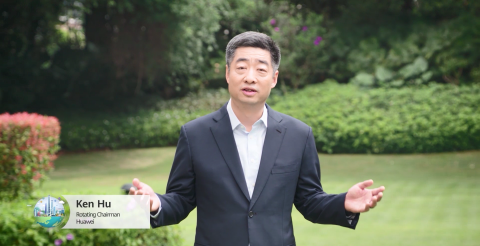Middle East, March 28, 2021: Huawei recently held its online Industrial Digital Transformation Conference, themed “New Value Together”. Nearly 50 customers and partners from more than 10 countries and regions shared their industrial practices and jointly explored the new value of digital transformation in the post-pandemic era.
In particular, Huawei has shared insights on digital transformation, and introduced business strategies, talent programs, and ecosystems that support it. The company has also detailed practices that the business has carried out over recent years in the government, education, transportation, finance, and energy sectors, among others.

In his speech, Mr. Ken Hu, Huawei’s Rotating Chairman, pointed out that digital transformation is speeding up across industries, and full cloud adoption will happen 1 to 3 years earlier than expected. Going digital is no longer just for internet companies. It’s expanding to traditional industries, and from the office to the production floor.
So far, Huawei has built 13 Open Labs around the world to support joint innovation. In places like Munich and Dubai, the company is working with almost 900 ecosystem partners to incubate different solutions for industrial scenarios. To date, it has successfully verified more than 60 solutions in areas ranging from smart retail to smart manufacturing. On the technology side, Huawei is innovating in areas like smart campuses, deterministic networks, hyper-integrated data centres, smart clouds, and green energy to lay the foundation for an intelligent future.
A Value-Driven Model for Industrial Digitalisation
Huawei maintains that digital transformation should be focused on actual business use and scenarios, which can then be used to create value for customers through continuous improvement. In his keynote speech, Mr. Peng Zhongyang, Board Member, President of Enterprise BG, Huawei, stressed that three basic principles must be followed during digital transformation.
First, companies must continue to be customer-centric, which is the starting point of digital transformation. Secondly, they must seize two key factors: the convergence of technologies and scenarios is the key to digitalisation, while cloud is critical to continuous optimisation and value creation in the digital era. Thirdly, businesses should focus on customer requirements to build a symbiotic and shared digital ecosystem from three dimensions: scenario exploration, capacity building, and a cooperation model to jointly create new value for industries.
To that end, Huawei will be more open and continue to work with its 30,000 global partners to complement each other’s strengths and help overcome new challenges.
Huawei also highlighted how it is working to lay a foundation for building an intelligent world by providing intelligent upgrades for governments and enterprises. In particular, the company showcased how its Intelligent Twins architecture is enabling new solutions and practices in highly-efficient campuses, intelligent cloud, green power, hyper-converged data centers, and time-delay determined network solutions.
“The words representing the key features of the five solutions can form the word HEIGHT. Based on this concept, Huawei will provide the best products and solutions for enterprises worldwide to implement intelligent solutions, and explore the new HEIGHT of the intelligent world together”, commented David Wang, Executive Director of the Board, Huawei.
Speaking on its Intelligent Twins architecture, the conference was also the first time that Huawei has proposed optical slicing as the cornerstone of the next-generation optical transport network. Huawei’s Liquid OTN-based optical slicing seeks to guarantee a deterministic service experience and support the long-term evolution of industrial transformation, especially in power grid and transportation industries.





